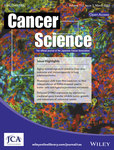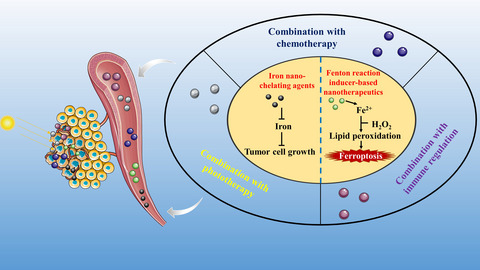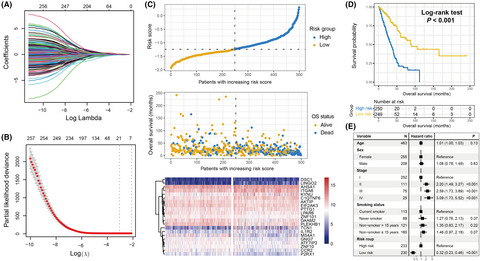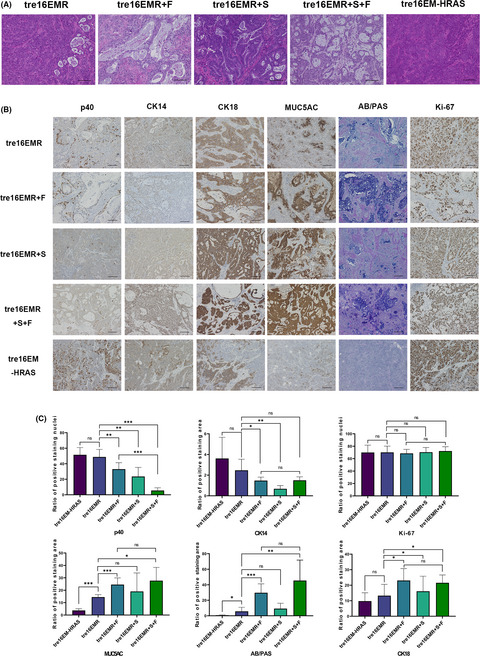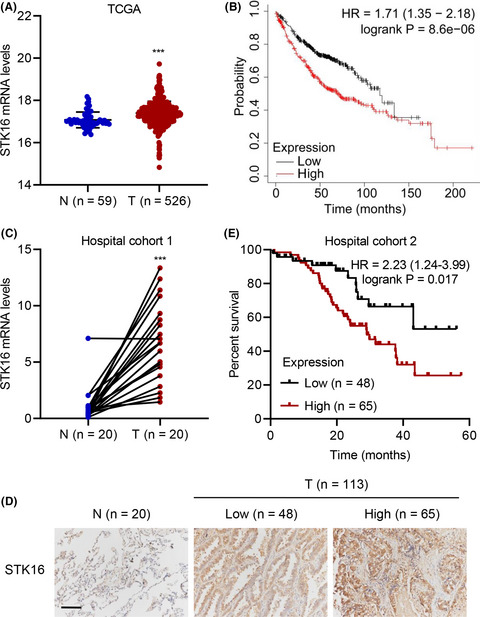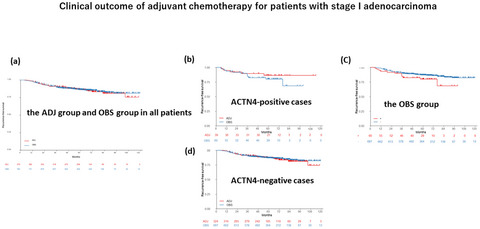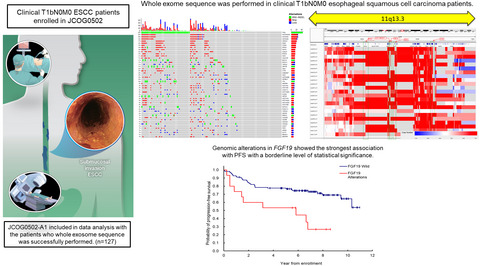Journal list menu
Export Citations
Download PDFs
ISSUE INFORMATION
IN THIS ISSUE
REVIEW ARTICLES
Utility of the Ba/F3 cell system for exploring on-target mechanisms of resistance to targeted therapies for lung cancer
- Pages: 815-827
- First Published: 07 January 2022

In this review paper, we comprehensively reviewed published studies that used the Ba/F3 model as a tool to investigate resistant mutations to molecular targeted drugs in non-small-cell lung cancers (NSCLCs) with driver mutations. Through a comparison with resistant mutations detected in clinical specimens, we found that 68% of them were also identified in Ba/F3 models. The Ba/F3 model is useful in exploring and/or validating on-target acquired resistance mechanisms to molecular targeted therapies in NSCLCs.
Nanomedicine targets iron metabolism for cancer therapy
- Pages: 828-837
- First Published: 28 December 2021
ORIGINAL ARTICLES
BASIC AND CLINICAL IMMUNOLOGY
NLRP4 negatively regulates type I interferon response and influences the outcome in anti-programmed cell death protein (PD)-1/PD-ligand 1 therapy
- Pages: 838-851
- First Published: 20 December 2021
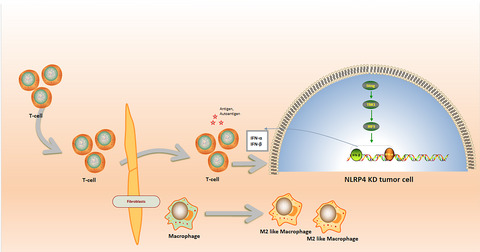
Our study addressed novel mechanisms for overcoming failures of immune checkpoint inhibitor (ICI) therapy for non-small-cell lung cancer (NSCLC) through endogenous regulation of NLRP4 on type I interferon. This is realized mostly through reshaping the tumor microenvironment to a “hot” tumor status, which is beneficial to the treatment of anti-programmed cell death protein-1. Furthermore, we provided new evidence on type I interferon (regulated by NLRP4 in our study) as a potential immune adjuvant to improve the efficacy of NSCLC patients ineffective to ICI treatment.
Identification of an IDO1-based immune classifier for survival prediction of upper tract urothelial carcinoma
- Pages: 852-863
- First Published: 28 December 2021
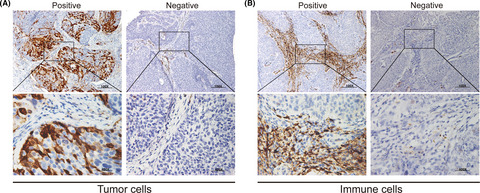
It is critical to explore additional immunosuppressive mechanisms different from PD-L1/PD1 in UTUC. Our study highlights IDO1 expression on tumor cells as a key regulator of the immunosuppressive microenvironment that resulted in poor prognosis in UTUC. Furthermore, we developed and validated an IDO1-based prognostic classifier with clear immunological relevance and superior prognostic accuracy, so that it could help clinicians make complete and accurate prognostic estimates and ultimately guide treatment.
Cancer immunotherapy using artificial adjuvant vector cells to deliver NY-ESO-1 antigen to dendritic cells in situ
- Pages: 864-874
- First Published: 31 December 2021
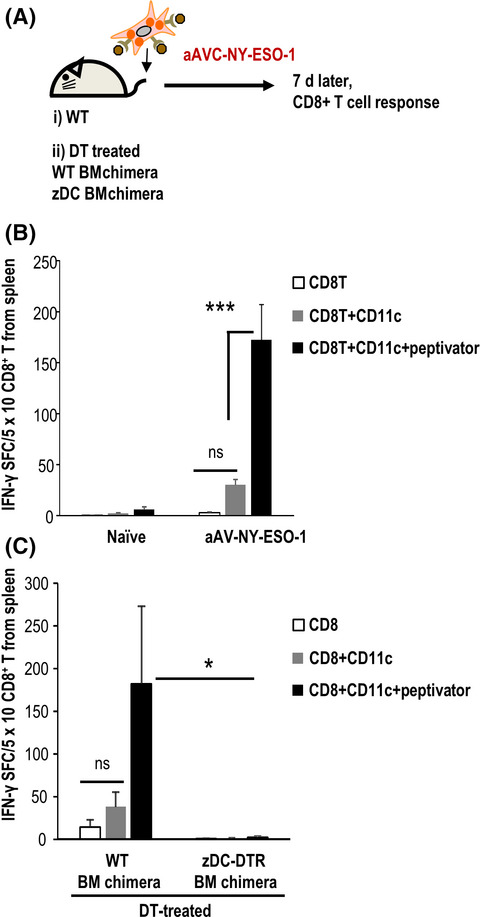
In this study, we developed a new type of artificial adjuvant vector cell (aAVC-NY-ESO-1) expressing a CD1d-NKT cell ligand complex and a tumor-associated antigen, NY-ESO-1. Although the induction of CTLs by vaccines for NY-ESO-1 is believed to be difficult, we successfully showed the NY-ESO-1-specific CTLs by aAVC-NY-ESO-1 therapy. As a key mechanism, we also determined that the NY-ESO-1 antigen from aAVC-NY-ESO-1 was delivered to the DCs in situ.
Complement C1q binding protein regulates T cells’ mitochondrial fitness to affect their survival, proliferation, and anti–tumor immune function
- Pages: 875-890
- First Published: 02 January 2022
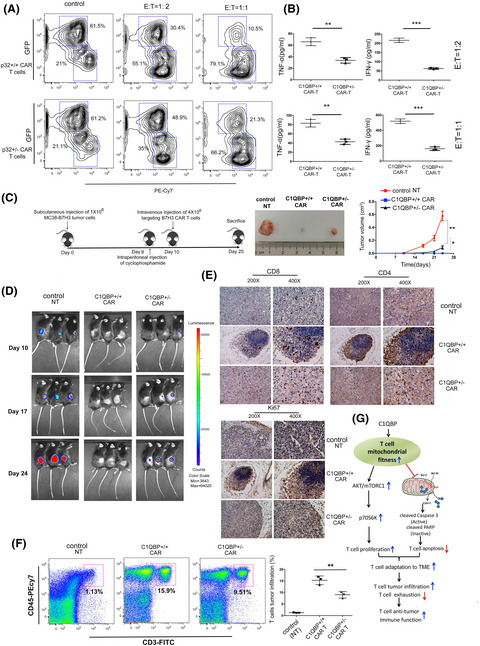
C1QBP knockdown renders T cells prone to apoptosis due to less accumulation of the anti–apoptotic proteins, including Bcl-2 and Bcl-XL, thus facilitating caspase-3 activation and PARP cleavage. C1QBP knockdown impairs T cells’ proliferation through dampening of the AKT-mTORC1 signaling pathway. C1QBP deficiency retards T cell tumor infiltration and aggravates tumor infiltrating T cell exhaustion, thereby decreasing their anti–tumor immunity.
An aging-related signature predicts favorable outcome and immunogenicity in lung adenocarcinoma
- Pages: 891-903
- First Published: 29 December 2021
CARCINOGENESIS
Development of an in vitro carcinogenesis model of human papillomavirus-induced cervical adenocarcinoma
- Pages: 904-915
- First Published: 21 December 2021
MEK inhibition suppresses metastatic progression of KRAS-mutated gastric cancer
- Pages: 916-925
- First Published: 20 December 2021
CXCR4 promotes the growth and metastasis of esophageal squamous cell carcinoma as a critical downstream mediator of HIF-1α
- Pages: 926-939
- First Published: 06 January 2022
CELL, MOLECULAR, AND STEM CELL BIOLOGY
PolyI:C attenuates transforming growth factor-β signaling to induce cytostasis of surrounding cells by secreted factors in triple-negative breast cancer
- Pages: 940-949
- First Published: 12 December 2021
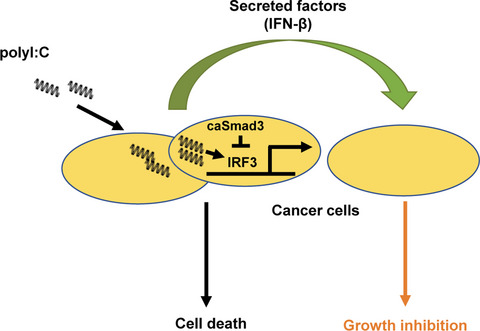
Activation of RIG-I-like receptor (RLR) signaling in cancer cells is widely recognized as a critical cancer therapy method. New facets of the protumorigenic function of transforming growth factor-β that suppresses both pyroptotic cancer cell death and interferon-β-induced cytostasis are suggested when RLR-mediated cancer treatment is used in triple-negative breast cancer.
ErbB4-mediated regulation of vasculogenic mimicry capability in breast cancer cells
- Pages: 950-959
- First Published: 31 December 2021
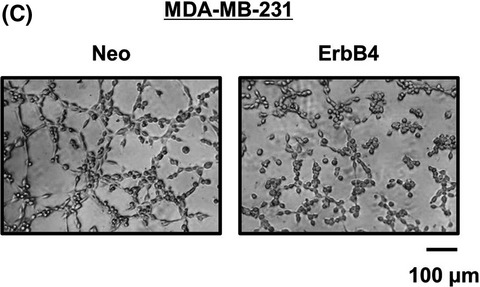
Vasculogenic mimicry (VM), a phenomenon in which cancer cells form capillary-like structures without endothelial cells, has been recognized to be a cause of malignant phenotypes in some solid tumors. This report demonstrated the significance of ErbB4-mediated VM formation, and suggested the possibility of ErbB4 mutations as effective targets in breast cancer.
Enforced dual-specificity tyrosine-regulated kinase 2 expression by adenovirus-mediated gene transfer inhibits tumor growth and metastasis of colorectal cancer
- Pages: 960-970
- First Published: 21 December 2021
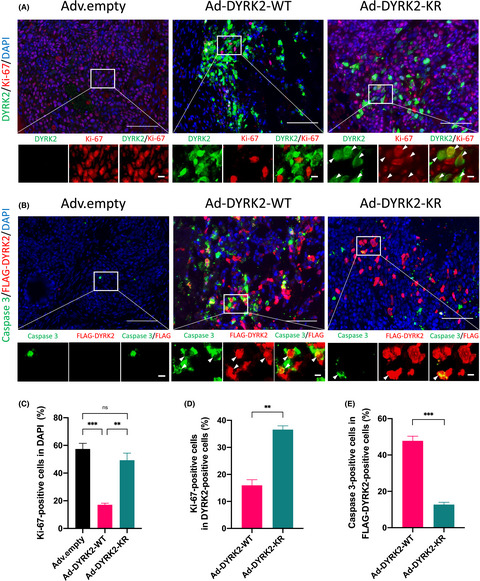
This is the first report to show that DYRK2 overexpression by intravascularly administered adenoviruses produces an antitumor effect on a mouse model of colorectal cancer liver metastasis. Currently, systemic chemotherapy is the only treatment available for unresectable liver metastases from colorectal cancer. This study could open up a novel therapeutic approach.
Squalene synthase predicts poor prognosis in stage I-III colon adenocarcinoma and synergizes squalene epoxidase to promote tumor progression
- Pages: 971-985
- First Published: 22 December 2021
Exosomes from M1-polarized macrophages promote apoptosis in lung adenocarcinoma via the miR-181a-5p/ETS1/STK16 axis
- Pages: 986-1001
- First Published: 19 January 2022
CLINICAL RESEARCH
Alpha-actinin-4 (ACTN4) gene amplification is a predictive biomarker for adjuvant chemotherapy with tegafur/uracil in stage I lung adenocarcinomas
- Pages: 1002-1009
- First Published: 29 November 2021
A phase 1 trial of xentuzumab, an IGF-neutralizing antibody, in Japanese patients with advanced solid tumors
- Pages: 1010-1017
- First Published: 06 December 2021
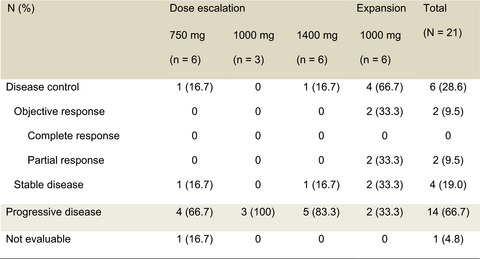
This phase 1 study assessed the safety and anti-tumor activity of xentuzumab in 21 Japanese patients with solid tumors. Treatment was generally well tolerated with no significant changes in blood glucose levels and no drug-related grade ≥3 adverse events. Two patients (9.5%) had a partial response and disease control was achieved in a total of 6 patients (28.6%); both patients with partial responses and 2 patients with stable disease had sarcomas.
Prognostic biomarker study in patients with clinical stage I esophageal squamous cell carcinoma: JCOG0502-A1
- Pages: 1018-1027
- First Published: 28 December 2021
Prognostic impact of circulating tumor cells detected with the microfluidic “universal CTC-chip” for primary lung cancer
- Pages: 1028-1037
- First Published: 29 December 2021
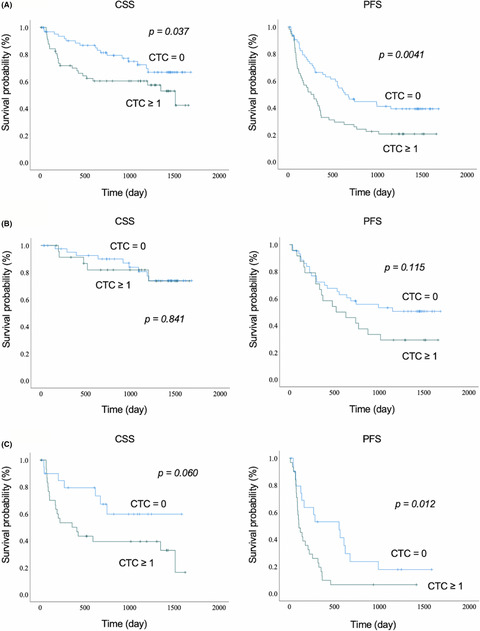
This study aimed to optimize the epithelial cell adhesion molecule (EpCAM)-chip and clarify the prognostic impact of circulating tumor cells (CTCs) in lung cancer patients. The EpCAM-chip is a highly sensitive system for detecting CTCs. The EpCAM-chip contributes to the prediction of recurrence and progression and enables genetic analysis of captured CTCs, which could open new diagnostic, therapeutic, and prognostic options for lung cancer patients.
EPIDEMIOLOGY AND PREVENTION
Treatment patterns and survival in advanced unresectable esophageal squamous cell cancer: A population-based study
- Pages: 1038-1046
- First Published: 05 January 2022
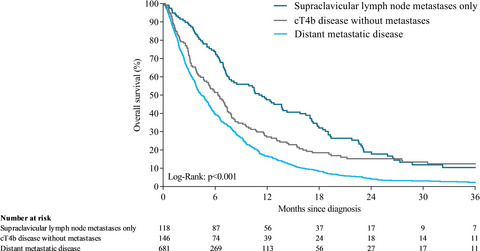
Patients with metastases limited to the supraclavicular lymph nodes had a better survival time compared with patients with a cT4b tumor (without metastases) and patients with distant metastases. Survival of patients with advanced unresectable ESCC in clinical practice was poor, even in patients treated with curative intent.
Surgical volume threshold to improve 3-year survival in designated cancer care hospitals in 2004-2012 in Japan
- Pages: 1047-1056
- First Published: 05 January 2022
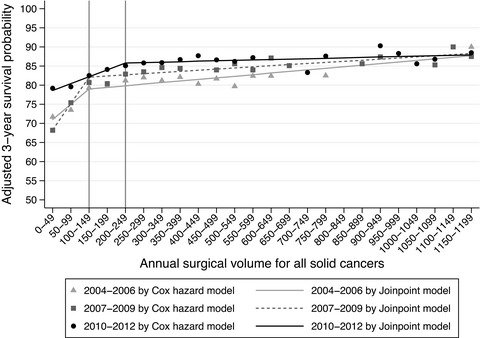
Designated cancer care hospitals are required to perform 400 surgeries annually in Japan, which is not necessarily defined based on patient outcomes. This study estimated the annual surgical volume thresholds based on the association between annual surgical volume and adjusted 3-year survival probability, and found that the existing surgical volume requirement is higher than our estimated thresholds. The existing requirement is considered optimal to ensure patient survival, and estimating surgical volume thresholds based on the association with patient survival can be used as an evidence-based reference.
GENETICS, GENOMICS AND PROTEOMICS
A modified MethyLight assay predicts the clinical outcomes of anti-epidermal growth factor receptor treatment in metastatic colorectal cancer
- Pages: 1057-1068
- First Published: 28 December 2021
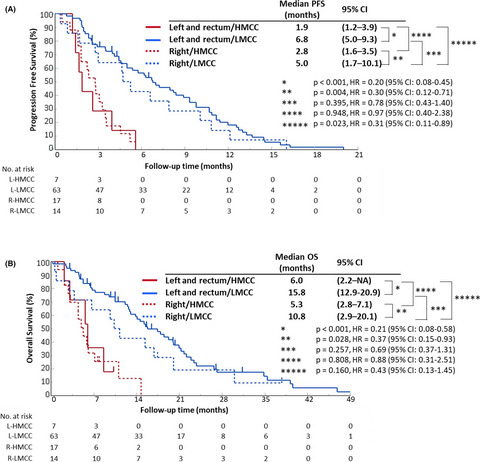
In this study, we developed a novel diagnostic method that could classify mCRC cases as highly methylated colorectal cancer (HMCC) or low-methylated colorectal cancer (LMCC) based on the methylation status of 16 CpG sites. We then compared the clinical outcomes of patients in the validation cohort between HMCC and LMCC groups. The primary results of our study are (1) HMCC was associated with a significantly worse response rate, progression-free survival, and overall survival than LMCC for RAS wild-type mCRC; (2) even in the right-sided or left-sided colon, LMCC had a better progression-free survival (PFS) than HMCC; (3) DNA methylation status was an independent predictive factor of anti-EGFR treatment and a more accurate biomarker than the primary tumor site. The novel DNA methylation assay we developed in this study was useful for predicting the clinical outcomes of anti-EGFR treatment regardless of the primary tumor site, suggesting it can be used as a complementary diagnostic in a clinical setting.
Next-generation sequencing of endoscopically obtained tissues from patients with all stages of pancreatic cancer
- Pages: 1069-1077
- First Published: 28 December 2021
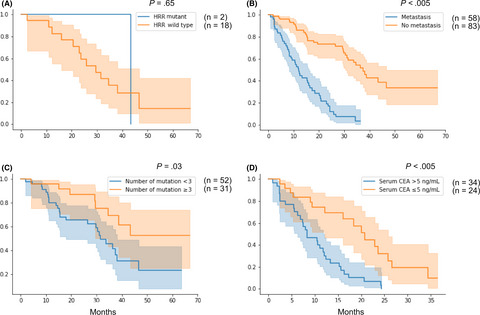
Previous genetic analyses of pancreatic cancer mostly used resected tissues, and commercially based NGS for precision medicine requires at least 50 ng of DNA. In this study, endoscopically obtained tissue samples acquired in real clinical practice were used for NGS analysis, and a low number of gene alterations was associated with poor prognosis in localized pancreatic cancer. In addition, NGS could be used in samples containing ≤10 ng of DNA.
PATHOLOGY
High prevalence of TERT aberrations in myxoid liposarcoma: TERT reactivation may play a crucial role in tumorigenesis
- Pages: 1078-1089
- First Published: 31 December 2021
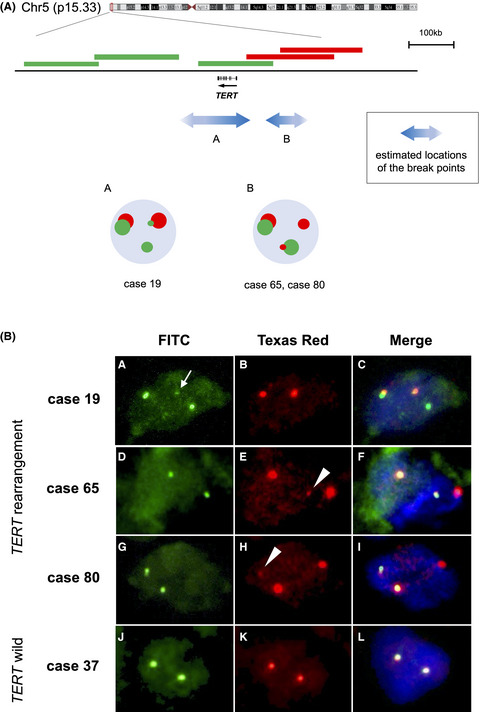
In this study, we investigated the 2 types of telomere maintenance mechanisms in a large cohort of MLPS cases and examined the relationship between the telomere maintenance mechanism and disease prognosis or clinicopathological parameters in patients with MLPS. Their findings suggest that TERT aberrations are not prognostic factors, but might occur at an early stage and play key roles in tumorigenesis.




